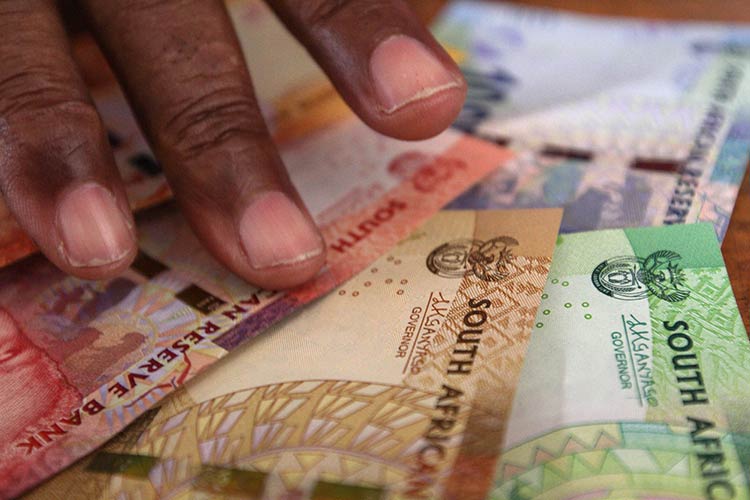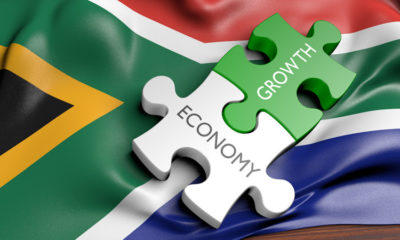- South African Stocks in Demand After Zuma Quits, Rand Soars
South African stocks index rose as much as five per cent on Thursday, putting the main index on track for its biggest one-day gain in more than three years.
The currency remained on the front foot, soaring to its firmest since early 2015, in the wake of Zuma’s exit.
Analysts have, however, warned the rally faces serious obstacles ahead of a budget speech next Wednesday.
Zuma quit late on Wednesday, reluctantly heeding orders by the ruling African National Congress ( ANC ) to bring an end to a nine-year tenure punctuated by scandals, stagnant economic growth and policy uncertainty.
As at 1530 GMT, the blue chip Top-40 index surged four per cent to 52,665 points, pulling back from a high of 53,072 achieved earlier but still on course for its biggest one-day gain since Sept. 2015.
The broader All-share index was up by 3.72 per cent at 59,533 points.
“The big news is that Zuma has now resigned and that has created a lot of euphoria.
“South African incorporated, banks, retailers and the like are all looking sharply better as a result,” said Independent Securities’ trader Ryan Woods.
South African banks considered the barometer of both economic and political sentiment were a feature on the gainers’ list.
The banking index surged 5.8 per cent with Nedbank rising 5.37 per cent and rival FirstRand up 6.4 per cent.
Banks have largely borne the brunt of Zuma’s policy decisions that included the sacking of two respected finance ministers, Nhlanhla Nene and Pravin Gordhan.
That, along with a weak economy, contributed to sovereign credit ratings downgrades to junk by S&P Global Ratings and Fitch.
In reaction to Zuma’s resignation, ratings agency Moody’s said it was focused on the new leadership’s response to economic challenges. S&P Global Ratings said the leadership change would not immediately affect the credit status.
Cyril Ramaphosa, former chairman of African biggest telecoms operator MTN Group, was sworn in as president on Thursday.
Ramaphosa, who has vowed to fight corruption and revitalise the economy, is seen by business leaders and investors as well placed to turn around the economy.
South Africa’s Gross Domestic Product (GDP) is estimated to grow by less than one percent this year.
Another key issue facing the 65-year-old president is policy uncertainty in South Africa’s mining industry, an important economic engine, which has been fighting in court with Zuma’s mines minister, Mosebenzi Zwane, over an increase in black ownership targets.
But some analysts said that the former union leader’s to-do list is way too long to make an immediate impact.
In the foreign exchange market, the rand advanced to levels last seen in February 2015.
“The good gains the rand has made could be extended toward 11.55/dollar, and move toward 11.00/dollar baring any further credit rating downgrades for S.A. and a credit positive budget,” said Investec’s Chief Analyst Annabel Bishop in a note.
At 1515 GMT, the rand was at 11.6600 against the dollar, having reached a session-best of 11.6025 earlier per cent stronger than its New York overnight close and at levels last seen in Feb. 2015.
“The economy is coming off an extremely low base so there is good chance the optimism will be around for some time, but Ramaphosa has to very soon move from the honeymoon phase to the doing phase,” said Chief Executive of Canon Assets Management Adrian Saville.
Reuters/Nan


 Billionaire Watch3 weeks ago
Billionaire Watch3 weeks ago
 Startups4 weeks ago
Startups4 weeks ago
 News4 weeks ago
News4 weeks ago
 News4 weeks ago
News4 weeks ago
 Bitcoin4 weeks ago
Bitcoin4 weeks ago
 Naira4 weeks ago
Naira4 weeks ago
 Forex3 weeks ago
Forex3 weeks ago
 Treasury Bills4 weeks ago
Treasury Bills4 weeks ago
























